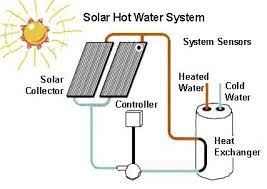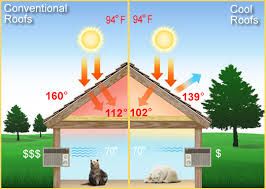You hear a lot from me about green roofs (as in vegetated roofs) and their various benefits, but today I'm going to veer off that subject a bit and talk about some other sustainable roofing options.
What else can you do with that unused space to make an environmental impact?
Rainwater Harvesting Systems
Rainwater harvesting systems allow you to collect rainwater from your roof to use for watering your garden or your green roof (if you have one)! These systems range from basic barrels under a downspout to underground tanks with pumps to get water to your plants. Harvesting rainwater for non-potable use (i.e., not for human consumption), means flushing toilets, washing cars, doing laundry, and watering the lawn are no longer putting a burden on your community’s water supply, while also reducing stormwater runoff from homes and businesses. Stored rainwater also is a good standby in times of emergencies such as power outages or during periods of extreme drought.

Solar Energy
Photovoltaic (PV) modules make electricity from sunlight, and are very simple, effective, and durable. They can be installed on your roof, or in any area that gets sufficient sunlight, and can run your appliances, charge your batteries, or make energy for the utility grid. The use of solar power helps to reduce air pollution, since energy produced from solar systems doesn't release emissions like fossil fuels do. When fossil fuels are burned, greenhouse gases like carbon dioxide are produced. Since no combustion takes place in solar energy systems, greenhouse gases are not created. The sun is also an unlimited resource, which cannot be said for coal, natural gas or oil which are being used up at a very rapid rate.
Solar Hot Water
Solar water-heating systems are different from the solar systems that make electricity. Collectors on your roof still grab energy from the sun, but in this case the energy is used to heat water. The solar collectors heat the water, and it’s stored in an insulated tank until needed. When the sun isn’t shining, the water in the tank slowly cools down, and a back-up heater kicks in to boost the temperature. The only downside to these is that they are most beneficial if you use hot water mostly during the day so the backup heater isn't needed.

Cool Roofs
Did you know that cool roofs (light colored or reflective roofs) can reduce energy consumption, decrease urban heat and help slow the creation of smog-forming pollutants? A high solar reflectance is the most important characteristic of a cool roof as it helps to reflect sunlight and heat away from a building, reducing roof temperatures. How much heat the roof radiates also plays a role, particularly in climates that are warm and sunny. Together, these properties help roofs to absorb less heat and stay up to 50–60°F (28–33°C) cooler than conventional roofing materials in summer weather. Like green roofs, cool roofs can reduce the amount of energy required to run an air conditioner in a building because less heat flows into the building. Also like green roofs, cool roofs can save money, improve comfort to those in the building, and increase the longevity of a roof, which in turn decreases the amount of waste going into landfills.

Light Pipes
A light pipe is a tube that runs from the ceiling of a room to the roof, where natural sunlight is collected and reflected down the tube to illuminate the room below. These pipes are used either to distribute light throughout an entire space, or to capture sunlight from one area in order to illuminate a darker area. Solar light pipes are gaining in popularity as an alternative to traditional skylights as they have the capability of sending more light into a space when compared to skylights. As a result, they can add more heat to a space than the average skylight. Although a light pipe does not allow for as much visual contact with the outside world, this makes them attractive alternatives for high security areas. Since light pipes can be very narrow and short in length, security risks decrease dramatically, which is why they are used in a many correctional facilities throughout the world. Additionally, there are no running costs, they are low maintenance, they can counteract Seasonal Affective Disorder, and you get a rapid return on your investment. They can even provide light for special applications such as living walls and aquariums. Light pipes are very energy-efficient and eco-friendly because they significantly reduce the need for electricity while keeping people connected to the outdoor environment.
As you can see, if a vegetated green roof doesn't work on your type of roof system, there are many other things you can do with that space. If a vegetated green roof is a possibility, all of the above options could be used in combination with a green roof.
Besides all of the environmental benefits listed above, think of the cost savings you can make in the long term with a few upgrades when building a house or re-doing your roof!
Alena Dawson
Green Roofing Manager